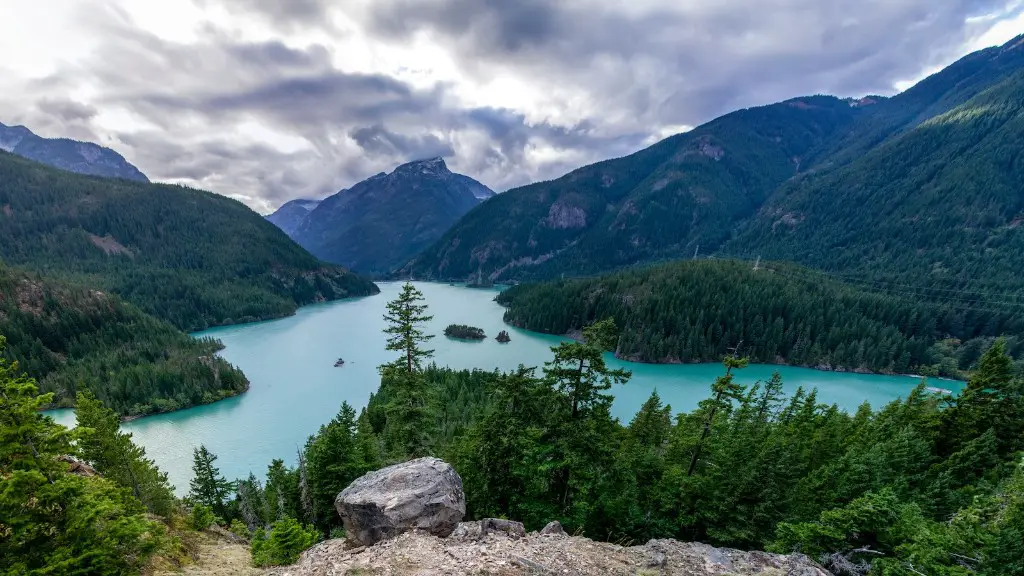How Much Water Is in the Mississippi River?
The Mississippi River is one of the main waterways of the United States, stretching 2,450 miles from Lake Itasca in Minnesota to the Gulf of Mexico. The river provides water to nearly 18 million people who live along its banks, and it supports many species of mammals, reptiles, amphibians, and birds. As such, the health of the Mississippi River has been a major source of concern for the past few decades, with an emphasis on how much water is in the river.
The amount of water in the Mississippi River is always changing, depending on the weather and other natural occurrences. In general, the river receives most of its water from a combination of spring runoff and melting snow. This averages to about 623,097 cubic feet per second being added to the river. The water then flows downstream and eventually reaches the Gulf of Mexico, where it is expelled.
The amount of water in the Mississippi River has a huge impact on the people, animals, and environment that depend on it. When there is too little water in the river, it can cause droughts, which can lead to water shortages and other problems. The opposite is true when there is too much water in the river. Overflowing rivers can cause floods, which can lead to damage and destruction to homes and businesses.
Recently, the amount of water in the Mississippi River has started to decline, due to several factors. For one, the amount of precipitation in the area has decreased due to climate change, meaning there is less runoff for the river to absorb. Another factor is increased development, which has caused more water to be drawn from the rivers for urban use. Increased agricultural use has also caused water levels to drop.
In response to the decline in water levels, state and federal agencies have taken steps to monitor and manage the Mississippi River’s water levels. Water conservation measures have been put in place, including restrictions on water use and improved water-use practices. Agencies have also established water quality regulations, which include monitoring the levels of pollutants and sediment in the river.
Ultimately, the amount of water in the Mississippi River will continue to be an important issue to monitor. It will be up to individuals and governments to find ways to conserve water and protect the river and its ecosystems. With continued efforts, it is possible to restore and sustain a healthy balance of water in the Mississippi River.
Impact of Water on the River’s Ecosystems
The amount of water in the Mississippi River not only affects the people that depend on it, but also the ecosystems within the river. The water helps to sustain aquatic habitat for many species including fish, amphibians, and even reptiles. As such, the water level of the river is a major factor in determining the health of these species.
When there is too little water, it can have a serious impact on these species, as they can no longer access the shallow areas of the river that are essential for breeding and feeding. Low water levels also mean there is less oxygen in the water, which can be toxic to certain species. On the other hand, when there is too much water in the river, it can lead to flooding, which can disrupt the habitats of certain species and even cause their death.
So the availability of water is crucial for sustaining the health of the Mississippi River’s ecosystems. Conservation efforts are needed to ensure that the water level of the river remains balanced, in order to support the diversity of species that call the river home.
Economic Factors that Influence the Water Level
The amount of water in the Mississippi River is also heavily influenced by economic forces. For instance, industries that require large amounts of water, such as agriculture and energy production, draw heavily from the river. This poses a problem because when too much water is removed from the river, it can lead to a decrease in water levels, which can have negative consequences, as discussed above.
At the same time, industries that use water can create jobs and help to stimulate the local economy. This can be beneficial for communities that depend on the Mississippi River for economic development, but it is important to ensure that the amount of water being taken is sustainable. Otherwise, it can cause long-term harm to the river and the ecosystems it supports.
The importance of regulating water usage is further highlighted by the fact that the Mississippi River is a major source of drinking water for millions of people. Unsustainable water removal can not only lead to a shortage in water for the population, but it can also increase the risk of contamination, which could be deadly for the environment and for people who rely on the river for drinking water.
The reality is that industry and population growth will continue to increase, and as a result, water usage will only increase as well. It is therefore important to create policies that balance economic development and the need for groundwater with the need to protect and sustain the Mississippi River, ensuring that its water levels remain healthy and abundant for years to come.
Role of Government in Regulating Water in the Mississippi River
Governments play a crucial role in managing the water levels of the Mississippi River. In the United States, the Army Corps of Engineers is responsible for managing and regulating the river, which includes managing its water levels. The Corps is empowered to act regarding any activity that has a potential to impact water quality or quantity, including construction projects and water-use policies.
The Corps has put in place several policies to manage the amount of water in the Mississippi River. These include regulations on water withdrawal and allocations, and the enforcement of water-quality standards. The Corps also works closely with state agencies to ensure that the environment and water quality are maintained at optimal levels.
It is clear that government action is essential when it comes to regulating water in the Mississippi River. Governments play an important role in setting the parameters for sustainable water extraction and use, as well as enforcing regulations that protect the river and its ecosystems. Without effective policies and regulation, it would be very difficult to ensure a healthy water balance in the river.
International Efforts to Preserve the Mississippi River
The Mississippi River is a major waterway that spans across two countries, the United States and Canada. As such, preserving the health of the river has been a major source of cooperation between the two nations. Both the US and Canada have established policies to ensure the sustainability of the river and its ecosystems.
The most notable of these is the International Joint Commission (IJC). Established in 1909, the IJC is an international organization that monitors and manages the shared water resources of the US and Canada. The IJC has been instrumental in creating water management policies along the Mississippi River, including restrictions on water use and water-quality regulations.
The IJC is an important example of how cooperation between two nations can lead to positive outcomes. With its policies in place, the IJC has played an important role in protecting the water resources of the Mississippi River and ensuring that its water levels remain healthy.
Conclusion
The amount of water in the Mississippi River is essential for the people, animals, and environment that depend on it. A healthy balance of water is necessary for sustaining the river’s ecosystems and for providing water for industry and population growth. Governments and international organizations have established policies and regulations to protect the river and its water resources, but ultimately, individuals and communities must take responsibility for conserving water.





